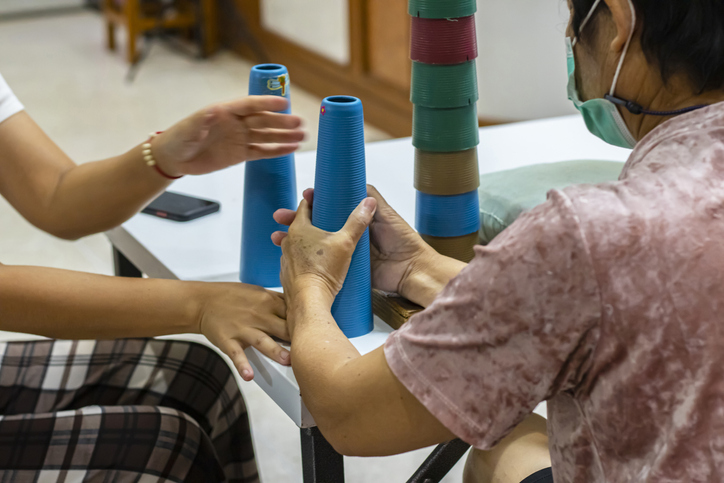Treatments
How Can Occupational Therapy Help With Chronic Pain?

What is an occupational therapist?
The role of an occupational therapist, or OT, is to help individuals maintain independence by teaching them ways to modify everyday tasks and activities that they can no longer do or have difficulty completing on their own. This could be due to certain conditions, such as autism, ADHD, sensory processing disorder, Alzheimer’s, arthritis, traumatic injury, stroke, etc. An OT can help individuals learn how to use assistive technology, learn different ways to complete tasks, suggest safety measures for the home, and train caregivers. Some OT’s help with cognitive aspects of daily life, such as helping with organization, routines, and problem-solving.
How does occupational therapy help with chronic pain?
Occupational therapy is often beneficial to those with a chronic pain condition. It covers a wide range of treatments that can be divided into six categories: activities of daily living and self-care, instrumental activities of daily living, health management, rest and sleep, education and work, and play, leisure, and social participation.
Activities of daily living
An occupational therapist can help with the ability to perform daily activities. This includes grooming, toileting, functional mobility, dressing, eating, and sexual activity. Approaches an OT might use to achieve this include the following:
- Nerve mobilization
- Ergonomic and body mechanic training
- Neuromuscular re-education
- Functional mobility training, including static positioning, transfers, lifting and bending techniques, and dynamic movement
- Activity pacing and energy conservation strategies
- Range of motion and strengthening exercises
- Positioning equipment and strategies
- Adaptive equipment selection and training
- Fall safety and prevention
- Home evaluations
Instrumental activities of daily living
Instrumental activities of daily living include activities that can greatly increase the quality of life, even though they may not be necessary for daily functioning. An OT can offer certain services to help with these tasks, including the following:
- Activity pacing and energy conservation strategies, including activity analysis and activity modifications
- Community reintegration
- Adaptive equipment selection and training
- Transportation training, such as driver evaluations and driver rehabilitation
- Compensatory cognitive strategies
Health management
Individuals with chronic pain may need help managing their health. Occupational therapy can assist in developing skills related to the following:
- Medication management
- Patient education and disease self-management, such as trigger identification, symptom tracking, pain flare-up planning, etc.
- Eating routine strategies, including frequency and quality education, avoiding dietary triggers, improving energy management, etc.
- Pain communication and assertive communication training
- Pain coping strategies (e.g., physical modalities, complementary strategies, sensory strategies, self-regulation, mobilization)
- Time management strategies or routine establishment
- Physical activity routines
Rest and sleep
Chronic pain can negatively impact the ability to sleep or rest. OT can help with the following:
- Sleep hygiene and positioning strategies
- Energy conservation and fatigue management
- Cognitive behavioral therapy for insomnia
School and work
The ability to participate in work and school can be hindered by chronic pain. An occupational therapist can help navigate the intersection of chronic pain and work or school with the following:
- Advocacy and self-advocacy training
- Academic and work accommodations
- Assertive communication training
- Ergonomic and body mechanics training
Play, leisure, and social participation
This facet of an individual’s life is often overlooked when determining the treatment of chronic pain. However, OT is beneficial in areas that include the following:
- Environmental modifications
- Community reintegration
- Community resources
- Community and online resources exploration
- Advocacy and self-advocacy training
- Assertive communication strategies
- Personal values and interests exploration
- Sensory strategies to monitor triggers
- Activity pacing and energy management strategies
- Compensatory cognitive strategies
Additional sources: American Occupational Therapy Association and American Occupational Therapy Association



















